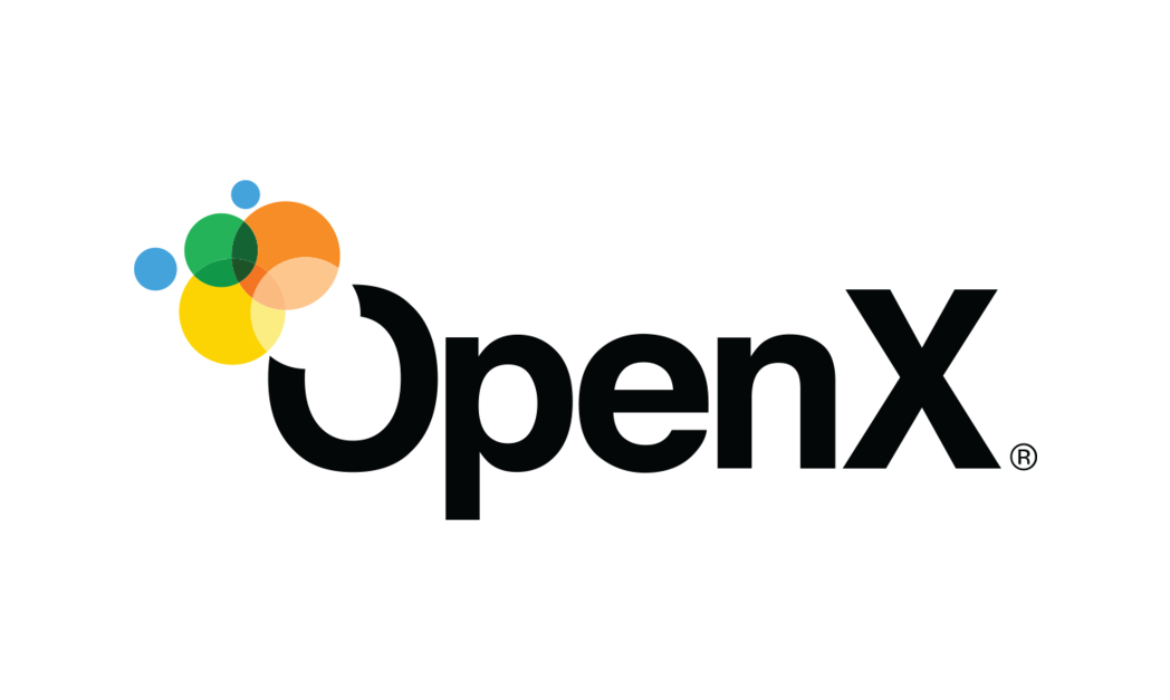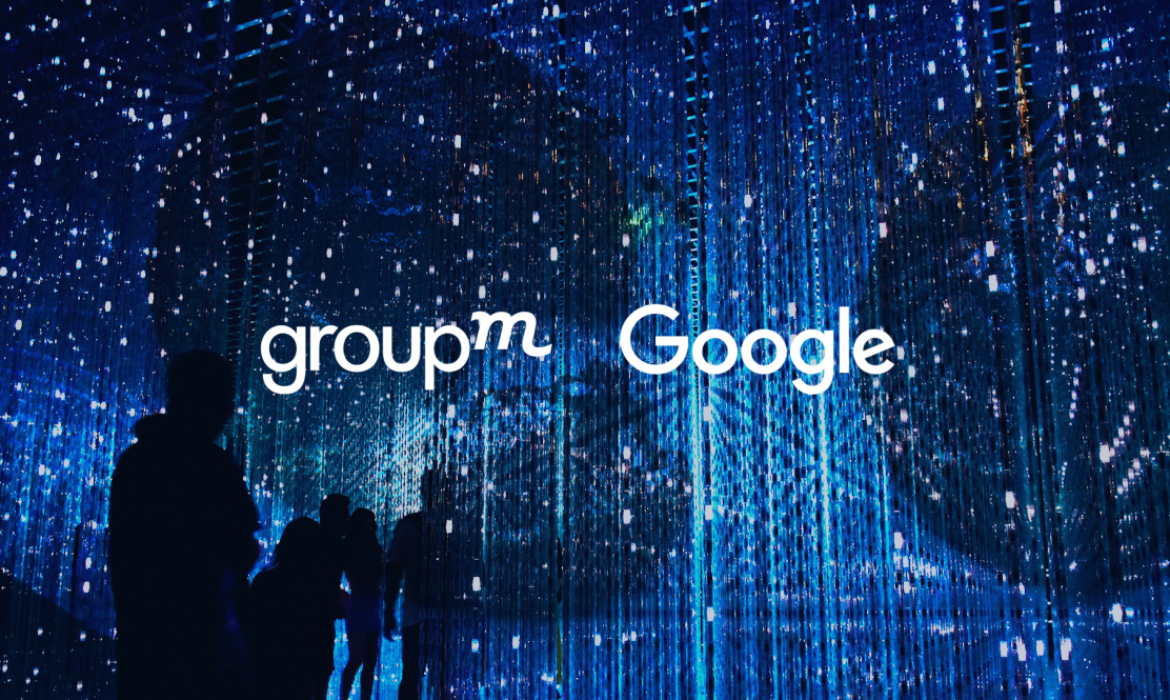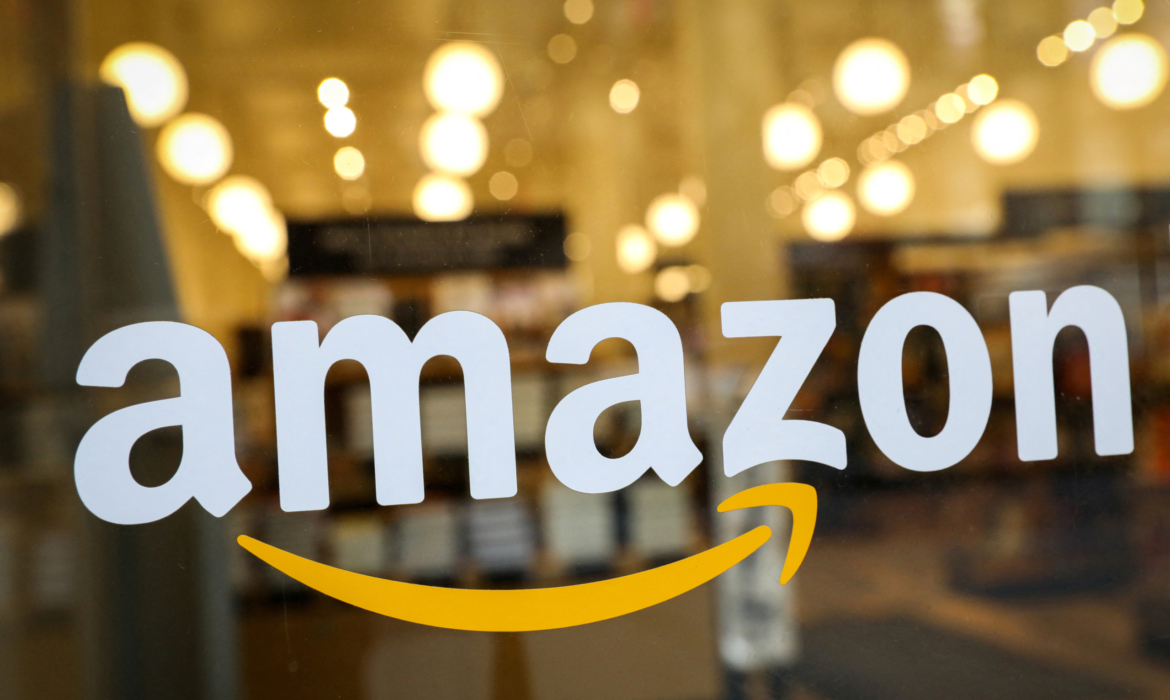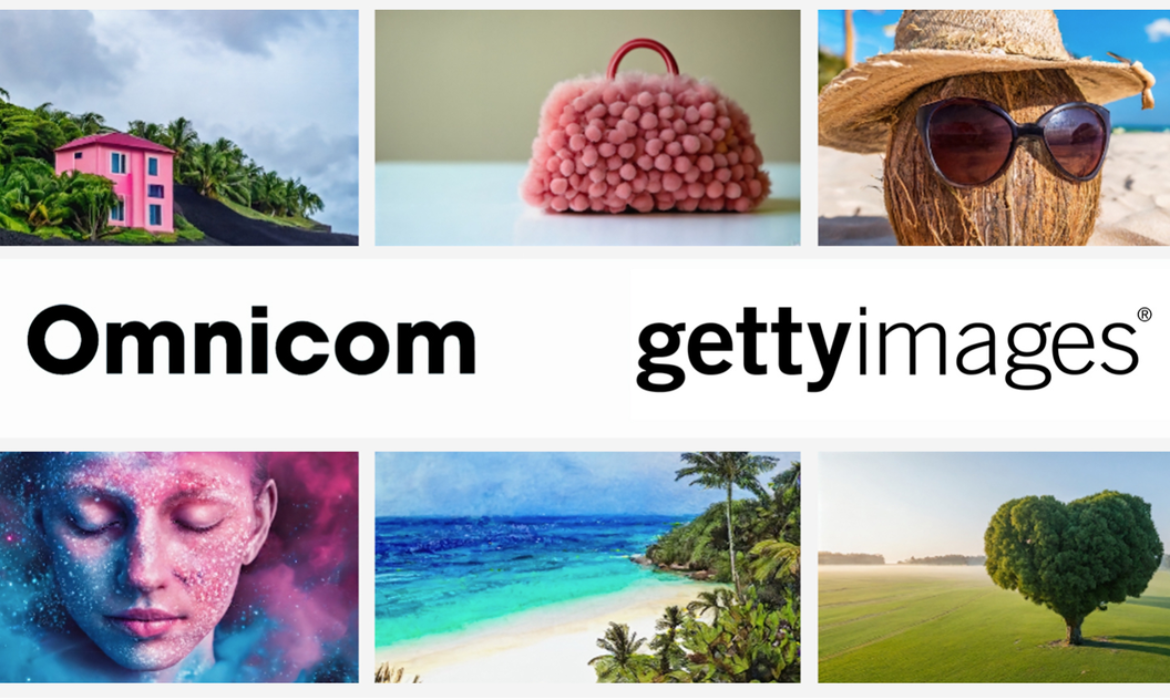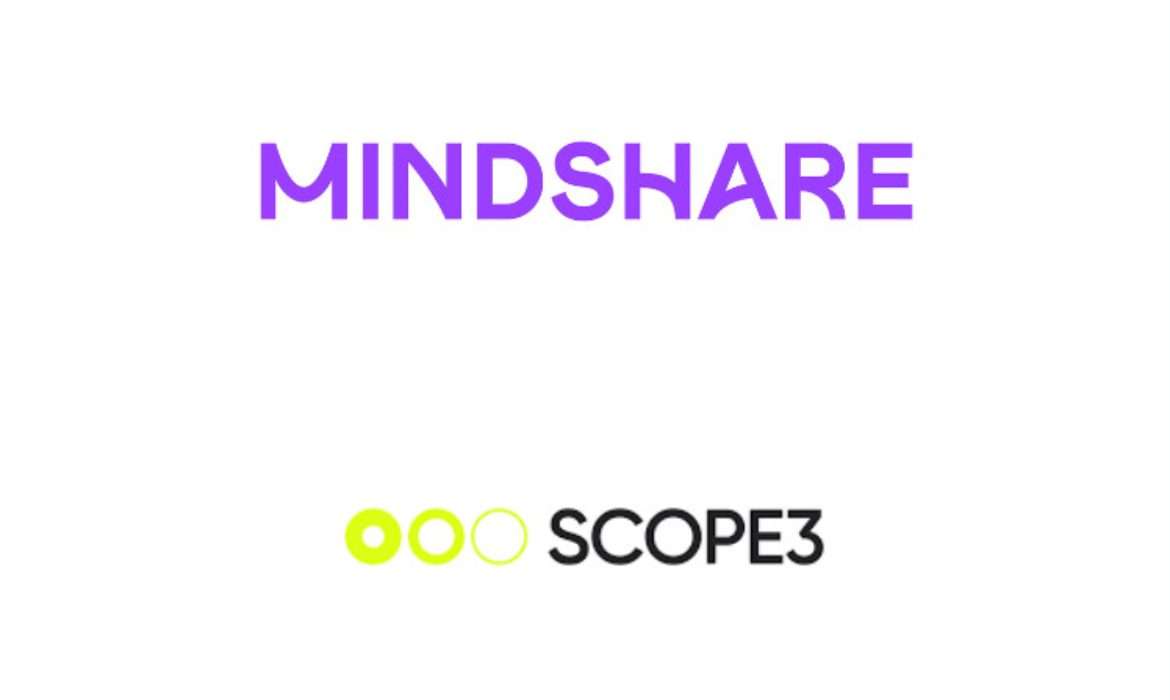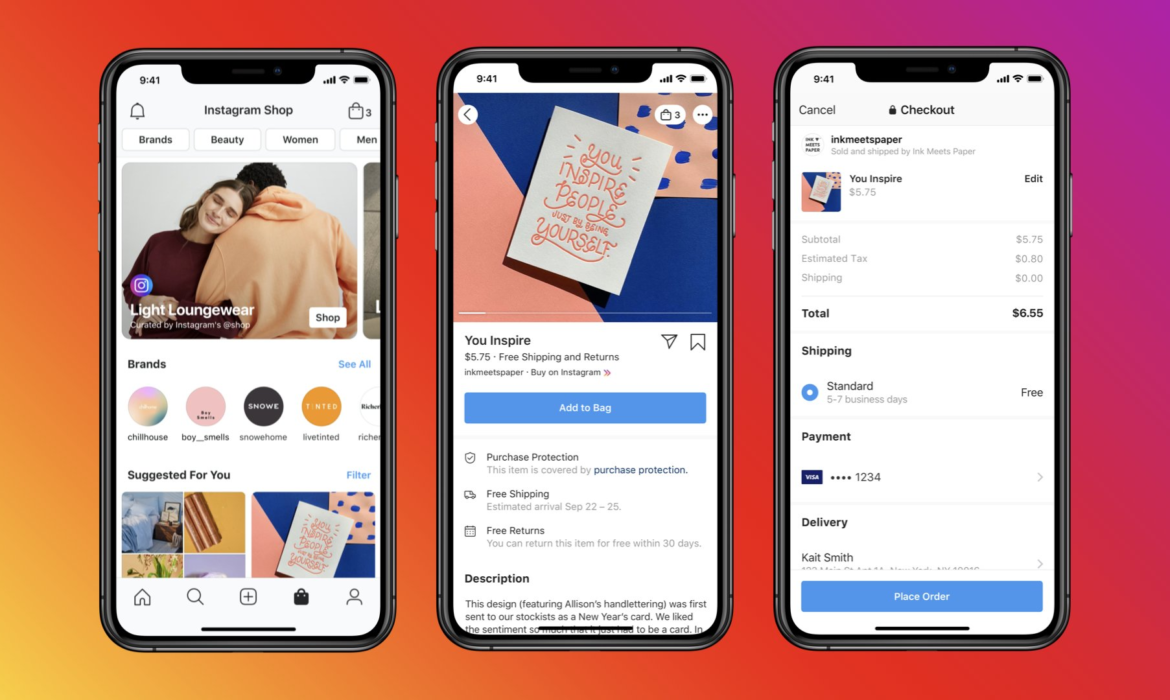SplitMetrics Acquires App Radar for Complete AI-Driven App Growth Services
In a seven-figure all-cash deal, SplitMetrics, an American startup that specializes in app growth solutions, announced that it has acquired App Radar. App Radar is an app marketing and analytics platform based in Austria. Thanks to this strategic partnership, SplitMetrics will be able to provide a broad range of app growth services on an artificial intelligence (AI) powered platform. Through the merger, the two startups come together to provide marketers and app developers with a complete solutions. With this agreement, a largest platform in the industry is created. This platform will offer AI-powered services like data analytics, app store optimization (ASO), paid user acquisition (UA), and conversion rate optimization (CRO).
Separate Brands, One Goal
The companies have announced that they will continue working as distinct brands, catering to more than 1,000 clients throughout Europe, the United Kingdom, North America, and the Asia-Pacific area. This strategy preserves each party’s distinctive advantages while utilizing the group’s combined knowledge. SplitMetrics, which employs 160 people worldwide, currently oversees more than $250 million in yearly advertising spend on behalf of companies including Babbel, Skyscanner, Glovo, and Viber.
Read More: JioAds Launches Picasso.AI, Its Proprietary Advertiser-Focused AI Tool
App Radar serves 30,000 app developers and marketers worldwide, including DEGIRO, ProCamera, Chatterbug, and Cronometer. It is an expert in app store optimization and automation. Every day, it keeps an eye on over 30 million keywords in app stores. App marketers will have access to a single point of contact for all the essential resources they require to expand their apps’ presence in major app stores by combining SplitMetrics UA solutions with App Radar’s ASO platform. Mobile businesses will thus have a single, all-encompassing growth engine. It will do away with the current data silos between ASO and UA.
AI-Driven innovation
The union shows how tech companies are adjusting to and contributing to the changing technological landscapes. It is a testament to the ongoing trend of AI reshaping industries. Its goal is to develop into an AI business offering comprehensive app services. It will help eliminate the distinction between UA, ASO, and CRO. SplitMetrics and App Radar are dedicated to having a significant impact on their customers’ success. Furthermore, it aims to raise the bar for user acquisition and operational effectiveness by utilizing cutting-edge AI technologies and market insights.
Read More: Omnicom Signs Generative AI Licensing Agreement with Getty Images
OpenX Announces TV+, An Ongoing Initiative to Maximize Biddable CTV
One of the top global omnichannel supply-side platforms, OpenX Technologies, has announced the launch of TV+, a continuous project to maximize CTV’s potential by fusing the most potent elements of programmatic and linear buying models. Due to an over-indexing of intermediaries in the current CTV landscape, buyers are unable to purchase in biddable media environments efficiently. Furthermore, it’s common for agencies and brands to pay CTV CPMs without having complete visibility into what they’re purchasing.
The CTV Landscape
Buyers cannot confidently rely on their KPIs when non-TV content is labeled as CTV, devaluing publishers’ premium content. With immediate effect, OpenX will remove all resellers from its CTV inventory pool in TV+’s initial phase, . This action also guarantees that publishers receive a fair portion of sales, which supports the creation of excellent content for users. Furthermore, OpenX is going to eliminate all non-TV content from its CTV inventory, which includes gaming UGC, OTT, mobile, and fireplace apps. Although OpenX intends to monetize these kinds of inventories as online video instead of CTV, this TV+ phase appropriately categorizes content, offering more exclusive advertising opportunities, a distinct inventory value, and more precise measurement.
What’s in it for publishers?
Publishers may confidently place their premium inventory into biddable environments as part of TV+’s initial step toward transforming programmatic CTV into a premium marketing opportunity, all the while providing brands and agencies with complete transparency into what they’re purchasing. TV+ provides publishers, agencies, and DSPs with an equitable and transparent value exchange through these innovations. Buyers can access direct premium publisher integrations on over 110 million measurable “glass-on-wall” devices by subscribing to TV+. Visibility into impressions is provided by log-level data, and transparency and control are enhanced by this access to direct-sourced inventory. Additionally, by guaranteeing that they are receiving premium content, this initial TV+ phase protects the interests of consumers.
Read More: OpenX Launches ConteX: A Flexible, Contextual Advertising Marketplace
Here’s what they said
Adam Roodman, SVP of product strategy and management at Yahoo said,
CTV is a powerful channel for marketers to reach and engage with their audiences. As this happens, solutions that prioritize control and transparency will enable buyers to lean into their KPIs in biddable CTV environments, helping them further realize the full promise of programmatic CTV.
Ashwin Navin, co-founder and CEO at Samba TV added,
As more marketers choose CTV for incremental reach over linear, there’s tremendous value for the ecosystem in scaling reach beyond direct buys. Solutions that provide trust and transparency empower data providers to scale audiences in CTV and digital while increasing confidence in biddable environments and optimizing working media.
Chris Kane, founder of Jounce Media stated,
The long-term growth of biddable TV advertising requires buyers and sellers to have confidence in marketplace integrity. OpenX’s TV+ creates these conditions, ensuring media buyers get the quality they expect from their TV investments and ensuring media owners, not supply chain intermediaries, are the beneficiary of those investments.
Geoff Wolinetz, SVP of publisher and demand platforms at OpenX commented,
I’ve spent the majority of my career in TV, and ensuring that CTV doesn’t repeat the same cycles as digital is imperative to the success of programmatic TV. As we embark on creating the future of CTV, we have the opportunity to make programmatic TV more efficient and effective by ensuring content is fit for purpose, accessed directly, and demand and supply partners have transparency across the value chain. This will positively impact buyer confidence, enabling them to implement key strategies such as incremental reach.
Read More: OpenX Partners with Cedara for Automated Emissions Measurement
Vevo and Publica by IAS Announce Partnership for CTV Ad Serving
Vevo, the top music video network in the world, and Publica by IAS, a top Connected TV (CTV) ad server owned by Integral Ad Science, announced a global partnership. This partnership enables Vevo to enhance their advertisers’ targeting abilities, improve the viewing experience of their streamed content by making it akin to a traditional TV show, and increase their revenue from CTV advertising by introducing a programmatic unified auction for the premium ad slots within their streamed ad breaks. This covers the ability to buy the first slot inside ad pods, frequency management, and competitive separation.
Characteristics implemented by Vevo
With features that mimic typical TV commercial breaks, advertisers can effectively target Vevo’s global music-loving audience.
Advanced Ad Serving: Vevo can provide advanced CTV ad breaks with the precise targeting options needed by advertisers. Furthermore, it can also provide the capacity to maximize each slot in a pod based on revenue per second.
Advanced Ad Pod Decisioning: This feature allows Vevo to own a pod by brand category and ensure an advertiser’s first pod placement. This aids in buy-side frequency management and competitive separation. Vevo can also guarantee that CTV inventory is served securely and targeted, giving advertisers the transparency and control they need. This enables Vevo to provide their engaged viewers with an improved viewing experience while optimizing revenue
Unified Bidding: This feature enables Vevo to extract the highest-yielding ad for each slot in each streaming ad pod. It does so by conducting a controlled, unified auction of all demand sources. In order to provide real-time transparency into each programmatic auction where the company’s inventory is cleared, Vevo is also utilizing the Publica ‘Live Logs’ feature. As a result, Vevo can now continuously improve yield and data strategies to prevent demand loss due to supply path optimization (SPO).
Read More: TV9 Network Partners With JioTV and JioTV+ for Enhanced Mobile and CTV Reach
CTV Advertising
Based on GroupM’s mid-year forecast, CTV advertising is expected to grow to $25.9 billion in 2023. This is a rapid increase. As a result, the collaboration is timely to take advantage of this expanding trend and grab new business prospects. Vevo can guarantee that its CTV inventory is targeted and served in the safest manner possible. It does so by putting Publica CTV advertising decision-making technology to use. This will give Vevo’s advertisers the control and transparency they need. Advertisers can access Vevo inventory programmatically through several of the top supply-side platforms (SSPs) in the world.
Here’s what they said
Natalie Gabathuler-Scully, EVP, Revenue, Distribution & Data Operations, Vevo said,
As the Vevo catalog continues to expand, we are excited to partner with Publica to ensure that we are providing a high quality and curated best- in-class viewing experience, while ensuring that our advertising partners can effectively reach our global audience of music lovers. By providing advertisers with greater control and increased transparency, they can better optimize their CTV campaigns when reaching our engaged viewers.
Sean Galligan, CRO, Publica by IAS added,
We’re excited about our new partnership with Vevo, and we look forward to providing them with the ad decisioning technology to grow their global advertising revenues, offer outcomes to their advertisers and empower them with the ad serving capabilities to improve their streamers’ viewing experiences on CTV.
Read More: Basis Partners with LG Ad Solutions for U.S. CTV Political Advertising
Indian Gaming Firms are Eyeing the Brazilian Market. Explore Why!
India is becoming a major gaming market; by 2028, it is expected that the industry will grow to $7.8 billion. Younger demographics, changing IT infrastructure, growing usage of mobile devices, and fast internet connectivity are the main drivers of the Indian gaming market. This growth is being further accelerated by the incorporation of technologies like augmented reality (AR) and the metaverse into computer and console games. The growth of the industry is also being aided by the government’s encouragement of game development, the increase in female leadership, and the move toward mobile and multiplayer gaming. Yet why are Indian gaming companies looking to Brazil? Let’s delve deeper into this article.
Indian gaming market
India, which has one of the largest youth populations in the world, is expected to be among the top markets for the gaming industry. One of the main reasons propelling the nation’s market growth rate is the expanding IT infrastructure, which is being fueled by the growing use of smartphones and high-speed internet. Everything from the value of localization to player preferences for in-game revenue Indian players use video games to help them decide which business decisions to make. As per the All-India Gaming Federation, India is the country that downloads the most mobile games (15 billion downloads annually), followed by the US and China.
Brazil, the land of new opportunities
Brazil’s gaming market is very similar to India’s, so Indian game companies are hoping to introduce their products there. This is attributed to the tighter regulations and higher costs associated with acquiring new customers that are driving this initiative. Brazil is the fifth largest gaming market in the world by player count, and it ranks fourth in the world for mobile games with 5 billion downloads. A report claims that it is one of the Latin American markets with the fastest growth rate. Brazil also has a young population with more people having affordable, high-speed internet access.
Additionally, Brazil’s gaming revenue ranks 10th globally, with projections of $446.10 million market revenue in 2027. Gaming companies are excited about Brazil’s increasing average revenue per user (ARPU), in addition to the country’s rapidly increasing smartphone penetration. Brazil is a rich land of opportunity because of all these factors, which is why Indian gaming companies have decided to invest more and make plans to establish a presence in the country in the upcoming years.
Read More: True Gamers Invests $13.5 million in the UAE Gaming Scene
Possibilities for growth
Investigating developing markets like Brazil can help game studios reach a more varied and interested audience through cost-effective customer acquisition. Brazil is a market full of opportunities and excitement. Therefore, Indian gaming firms are now eyeing the Brazilian market. In a few aspects, the typical Brazilian gamer is remarkably similar to the typical Indian gamer. According to Brazil’s Central Intelligence Agency, 16.5% of the country’s population is between the ages of 15 and 24. Both of these markets share a similar user profile and set of preferences. Both have a strong fan base for casual games like HopScotch and hardcore games like Battle Grounds, Free Fire, and Call of Duty.
Tightening gaming laws in India
Large and small gaming companies operating in India have recently had to reevaluate their plans due to new regulations. This holds especially true for those involving the Goods and Services Tax (GST). Gaming companies are required by the new GST regulation to pay a 28% tax on player deposits. Due to the increased operating costs, gaming companies have referred to this as a fatal blow to the industry. In addition, Indian gaming companies are looking at opportunities in foreign markets. This is due to the country’s growing costs associated with acquiring new customers.
Profitability and income
Similar to India, Brazil monetizes games through microtransactions that allow users to unlock exclusive features. About 58% of respondents to a survey claimed to have made in-app purchases. These included power gems in casual games or guns in the Battle Royale game. These purchases can cost anywhere from $5 to hundreds of dollars.
Similarly, Brazilian gamers stated that getting special advantages like early access to particular features was the main reason they bought anything in-game. Brazil is not like India in that it has a higher propensity to spend money on in-app purchases. Data indicates that the ARPU of video games is $2 in India and roughly $27 in Brazil. Because of the higher in-game spending per user in Brazil, this results in a higher ARPU.
Brazil: Cultural ties and government assistance
Brazil Pix is a payment method developed by the Brazilian government. It is becoming more and more popular among gamers as a means of making purchases. Furthermore, it is a major contributor to growth. It’s a peer-to-peer payment system that works similarly to India’s UPI. Over time, gaming companies hope to use games to bridge cultural divides within global gaming communities. This entails bringing Indian games to Brazil and making Brazilian games more well-known among Indian gamers. Doing so will benefit both players and game developers.
Conclusion
The combination of creativity, technology, and cultural quirks promises an exciting future for gamers and the gaming industry in Brazil and India. The gaming companies are set to capitalize on the Brazilian market. This trip will undoubtedly offer countless opportunities for cooperation and bridging disparate communities worldwide.
Read More: Adscholars-iion Enters In A Dynamic Partnership To Transform Gaming In India
GroupM and Google Announce Post Third-Party Cookie Readiness Program
In collaboration with Google Chrome, GroupM, WPP’s media investment group, announced the opening of the world’s largest post-cookie technology readiness program. GroupM clients come together as part of this global initiative to gain a faster understanding of Google Privacy Sandbox APIs and how they are used in advertising. Clients who are willing to participate will have access to the learning program, which will enable them to evaluate and enhance their preparedness for third-party cookie deprecation in a practical setting with their own audiences and products. The collaboration’s goal is to eventually replace Chrome’s current reliance on third-party cookies.
Readiness Program for post-third-party cookies
In collaboration with Google Chrome, GroupM has introduced the first global post-cookie technology readiness initiative. To assist with technical troubleshooting, clients will be able to anonymously share test results. Additionally, as the test progresses, Google representatives will provide resources and direct feedback to GroupM clients. For the time being, they will only be offering this to GroupM. GroupM intends to utilize its global reach as the top media-buying agency to perform a meta-analysis of individual brand tests. The data will be anonymized and aggregated to facilitate learning and ultimately produce a meta-study.
Additionally, GroupM’s ad-tech partners’ solutions will be tested on the market first for participating advertisers. In a post-cookie world, the program is supposed to educate clients on targeting, optimization, and measurement of digital investments in display and video. Participating brands may share their thoughts on Privacy Sandbox features and utilize their current media plans and budgets without having to make any additional financial commitments.
Read More: GroupM and Amazon Ads Partner for Creator-Led Shoppable Format
Characteristics of the program
Unified Guidelines: GroupM is developing a unified testing framework based on the post-cookie testing guidelines provided by the UK’s Competition and Markets Authority (CMA). GroupM will collaborate with ad tech partners and advertisers to comprehend their plans for integrating privacy technologies. These will include Privacy Sandbox APIs and will overlay pertinent tests when feasible.
Anonymous Data: In addition to the brand’s own Privacy Sandbox program, GroupM will perform an anonymized meta-analysis across individual brand tests in order to maximize the learning potential for each participating advertiser. As part of group learning and ultimately a meta-study, this data will be aggregated and anonymized.
Enhanced Learning: With global ad tech partners, participating advertisers will have direct access to testing across GroupM alpha and beta. Participating clients will gain access to GroupM’s collective knowledge. Additionally, they will learn at the forefront of this industry-altering change as first-to-market testers.
What’s in it for advertisers?
This program offers advertisers the chance to prepare for the eventual deprecation of third-party cookies. It paves the way for brands to target, optimize, and measure without them. One of the many ways GroupM will assist clients in modifying their marketing strategies to stay relevant and successful in a post-cookie world is through this program.
Read More: Google Release Updated Ad Review Centre for its Ad Platforms
Google’s third-party cookies phaseout
Subject to resolving any competition concerns with the CMA, Google confirmed its plans to start deprecating third-party cookies in Chrome in H2 2024. It is doing so in an effort to better protect people’s online privacy. With GroupM and Google launching a post-cookie readiness program, it appears that the era of long-standing tracking and targeting technology is drawing to an end.
GroupM – Google Chrome partnership
GroupM will be in a better position to assist its clients in developing digital strategies that make use of Privacy Sandbox technologies. This is thanks to its partnership with Google Chrome. Learnings will be made available to GroupM. Moreover, participating clients prior to the scheduled deprecation date of third-party cookies in Chrome. Along with important ad tech partners, they can also offer input on Privacy Sandbox features. They can further assist in defining new internet privacy regulations that allow online content creators and publishers to maintain free content. Through the use of current media plans and budgets, the Privacy Sandbox program optimizes current campaigns. It does so in a way that is both future-proof and privacy-centric without requiring additional funding.
Here’s what they said
Christian Juhl, GroupM’s Global CEO said
We strongly believe advertising can and should respect people’s privacy while continuing to deliver exceptional value for consumers and advertisers. Since Google publicly declared their intention to deprecate third-party cookies, we’ve been collaborating closely with the Chrome team, our clients, and other partners to ensure our clients won’t miss a beat when the transition happens. The program we’re announcing today is an exciting step forward in that collaboration that will allow our clients to test existing preparations and enable us to develop new approaches where necessary.
Anthony Chavez, Vice President, Privacy Sandbox, Google added,
This program is a key step in our ongoing efforts to ready the industry for the transition to the post-cookie era. GroupM is well equipped to help advertisers with their third-party cookie deprecation preparation efforts. Along with their ad tech providers, this initiative will help GroupM’s clients as they work to integrate the capabilities that the Privacy Sandbox provides. Through this readiness program, GroupM and its clients will play an important role in helping to create a more private internet for everyone.
Read More: Verizon Media Rolls Out Connect ID To Replace Third-Party Cookies
After Meta, E-commerce Giant Amazon Taps Snapchat For In-App Shopping Feature
Amazon announced that it will enable Snapchat users in the U.S. to make direct purchases from the social media platform for select Amazon products. Customers will be able to shop straight from Amazon ads for Snapchat and check out without ever leaving the app thanks to the partnership. The move is part of the e-commerce giant’s strategy to profit from the rising popularity of social media shopping.
Rise of social media influence on e-commerce firms
Some platforms, like TikTok, are launching their own online shopping services as a result of social networks’ growing influence on shopping trends and patterns. Conversely, e-commerce companies can access the subscriber base through other social media platforms such as Snapchat.
Benefits to Snapchat from the e-commerce integration
Snap, which has reported higher-than-expected revenue and user growth over the last three months, would benefit from the deal. Additionally, the data shows that marketers are reverting to using smaller platforms like Snapchat.
Read More: Amazon Announces Publisher Cloud to Plan Programmatic Deals in Amazon DSP
Amazon – Snapchat partnership
On some Amazon products, prospective customers will also be able to view real-time pricing, Prime eligibility, delivery estimates, and product details on Snapchat. It comes after the e-commerce behemoth’s agreement with Meta, which permits users of the online retailer to link their Facebook and Instagram accounts to Amazon and make purchases straight from the social media platforms. Amazon and Pinterest have a similar partnership. The collaboration might facilitate Snap’s advertising business’s comeback.
Here’s what they said
Amazon spokesperson said in a statement,
Customers in the U.S. will see real-time pricing, Prime eligibility, delivery estimates, and product details on select Amazon product ads in Snapchat as part of the new experience. In-app shopping with Amazon is available for select products advertised on Snapchat and sold by Amazon or by independent sellers in Amazon’s store.
Read More: Meta and Amazon Collaborate for In-App Shopping in FB and IG
Omnicom Signs Generative AI Licensing Agreement with Getty Images
Omnicom has signed a groundbreaking generative AI licensing agreement with Getty Images, giving it access to one of the largest global providers of stock photos, videos, and other creative assets. This first-mover partnership will give Omnicom early access to Getty Images’ generative AI. The new tool creates a commercially safe and legally indemnified generative AI tool by combining the best creative content produced by Getty Images with the newest AI technology.
Omnicom Alpha Testing Program
Omnicom integrated the tool into Omni, its open operating system, as part of its Alpha testing program. Agency teams will be able to securely produce on-brand content that aids marketers in orchestrating better results by integrating the tool with Omni’s data. Additionally, they will be able to integrate the tool into client ecosystems and modify it using proprietary client data to create commercially successful images that reflect the client’s distinct visual identity.
Generative AI by Getty Images
Launched in September 2023, Getty Images’ generative AI is built on the cutting-edge Edify model architecture foundry, which is a component of NVIDIA Picasso, a generative AI model-building platform for visual design. The tool has unlimited indemnity for commercial use and is exclusively trained on content from Getty Images. Users can download and license any visual they create, giving Omnicom teams greater protection and usage rights and accelerating the time from idea to completion.
Read More: Omnicom Centralizes Leadership for Three Creative Powerhouses
Ethical AI practices
Both businesses have adopted a resolute position on ethical AI procedures. Omnicom is a member of the Coalition for Content Provenance and Authenticity (C2PA). It works to safeguard the legitimacy of AI assets for creators, brands, and customers. This is by developing and standardizing a future framework for content verification. Furthermore, Omnicom was the first holding company for advertising to sign up for Adobe’s Content Authenticity Initiative (CAI). The initiative aims to improve transparency and confidence in digital content. The C2PA standard is being promoted by means of this initiative.
Maintaining editorial integrity in Generative AI
Additionally, Getty Images has taken significant action to safeguard editorial integrity and public confidence in the media in the face of the proliferation of AI tools and platforms. It has done so by co-signing an open letter with a number of media companies and organizations that outlines suggested guidelines for industry and regulatory action. These guidelines include efforts to remove bias from generated content, transparency of training sets, and clear identification of AI-generated content. With the newest tool from Getty Images, users can be sure that it’s safe for use in commercial settings. Furthermore, they can ensure that the material they create won’t contain any identifiable persons or trademarked goods or brands.
Here’s what they said
Omnicom’s EVP, Chief Technology Officer, Paolo Yuvienco said,
We are honored to be a part of Getty Image’s new Generative AI tool, one that will significantly help our people move from ideation to execution in a seamless manner. Getty Images shares our commitment to the responsible use of AI, and that makes their new tool all the more enticing to us, especially given it is built with high quality authentic content. Providing our people and our clients a commercially safe option is a true game changer, and we’re eager to harness the tool’s capabilities alongside them.
Grant Farhall, Chief Product Officer at Getty Images added,
We are giving brands the freedom to explore Generative AI for internal ideation, alongside the confidence and trust to use content in commercial settings with the same protections as our world-class pre-shot libraries. We’re honored to have worked with Omnicom in our initial testing to refine in ways that meet the ongoing needs of marketers and advertisers.
Read More: Omnicom Acquires Flywheel, the Pioneering Digital Commerce Company
Mindshare and Scope3 Develop Emission Scorecard for Digital Campaign
Mindshare, a media services company affiliated with GroupM and WPP, and Scope3, a collaborative sustainability platform that reduces carbon emissions in media and advertising have developed a customized Emissions Scorecard. Clients will benefit from this tool’s ability to comprehend the carbon emissions of their digital media campaigns.
Insights on Carbon Emissions from Digital Media Activities
Mindshare’s clients will have access to real-time carbon emissions data for the first time on their digital media activities at the macro (business category, brand, country, and publisher) and micro (creative format, media type, and ad environment) levels. The Mindshare and Scope3 teams have been working together for the past year and a half to refine the way emissions are measured and develop a cutting-edge emissions reporting tool for brands.
Mindshare Emissions Dashboard
The Mindshare Emissions Dashboard was created with Scope3 to report emissions of digital media activity. This is in accordance with GroupM’s carbon decarbonization methodology. Marketers can thus balance the demands of greener media with those of successful business outcomes.
Read More: GroupM Bolsters Media Decarbonization with SeenThis Partnership
Sustainable Approach
The Mindshare “Report, Reduce, Remove Initiative” included the creation of the Emissions Dashboard. This sustainable step-by-step approach aims to maximize investment in greener choices throughout the media supply chain. Furthermore, it looks to minimize disruption to business requirements. Mindshare is the only organization in the sector dedicated to the Science Based Targets initiative (SBTi). Therefore, as an agency, it must implement its reduction efforts without sacrificing effectiveness.
Carbon emissions from different media sources
A combined 7.2 million metric tons of emissions are produced annually by digital, display, and streaming advertisements, according to Scope3’s Q2 2023 State of Sustainable Advertising report. When broken down by channel, streaming contributes 3.4 million metric tons and display advertising makes up more than half (3.8 million metric tons) of the total amount worldwide.
Here’s what they said
Dhruv Menon, Director at Mindshare said,
By giving marketers a 360-degree view of the carbon impact of their digital media activity, the dashboard enables change-making conversations and discussions with advertising and publisher partners. More importantly, it will also empower media practitioners to make sustainable media buying choices with a goal of eventually reducing 50% of all digital emissions by 2030.
June Cheung, Head of JAPAC for Scope3 stated,
Scope3 emissions data pinpoints exactly where marketers can take simple, yet meaningful, actions to reduce the carbon footprint of their digital advertising. It simultaneously helps the industry more clearly see and de-fund waste across the ad ecosystem. This type of industry-wide change is only possible if marketers have the tools that allow them to make informed decisions. By being able to access emissions data directly alongside campaign data, like the Mindshare Emissions Dashboard, sustainability is no longer an afterthought, it becomes a valuable lever for improving campaigns.
Read More: Magnite Partners with Scope3 to Enhance Advertising Sustainability
Meta and Amazon Collaborate for In-App Shopping in FB and IG
Amazon and Meta have partnered to make it easier to connect Facebook and Instagram accounts to Amazon. Customers will be able to purchase merchandise featured in their feeds without ever leaving the mobile app thanks to this. Interestingly, users can deliver goods to their chosen Amazon mailing addresses and complete transactions using their saved Amazon payment information. Only certain products that are promoted on Facebook or Instagram, either by Amazon directly or by independent sellers on Amazon’s storefront, are eligible for this in-app shopping feature. Meta can facilitate the process of allowing retailers to sell products on Facebook and Instagram without having to set up unique storefronts on those platforms by collaborating with Amazon.
The in-app shopping feature
This feature is referred to by the company as “Purchase with Amazon without leaving Facebook or Instagram.” A related support page has also been updated. India cannot currently access the page, but it is still accessible in the United States. The goal of this change is to prevent users from leaving their feeds while making purchases on Amazon, keeping them inside the app.
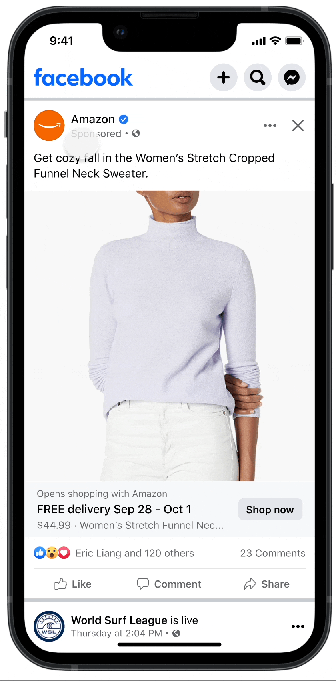
Image credit- TechCrunch
Users must complete a quick one-time setup in order to link their Amazon account to their Meta account (either Facebook or Instagram). Customers can easily make an Amazon purchase from the product ad after this is set up, without having to exit the Facebook or Instagram app. After that, the payment details and default shipping addresses that are saved on Amazon are used to finalize the sale.
Read More: Meta Contemplates Ad-Free Subscriptions, Targeting Indian Market
Benefits for advertiser
Users of Meta can now click on advertisements on Facebook or Instagram to visit a shop-like experience within the apps, making purchases simple and quick. Customers can make purchases using their linked Prime account without providing credit card information.
Improved ad signals: In order to boost customer investment, Meta receives more ad signals from the top online retailers and more attributed conversions.
Higher transaction fees: Due to its superior mobile discovery and ads engine, Amazon receives higher transaction fees than other retailers, which translates to more sales on its platform.
Increased conversions: With an extra sales channel and a 1:1 measurement between their most likely top ad platform and retail partner, merchants can increase the volume of conversions they generate.

Image credit- ITP Live
How will the in-app shopping feature help Meta and Amazon?
In an effort to increase ad revenue in the wake of Apple’s 2021 iOS privacy changes, Meta has decided to incorporate Amazon into its apps. It had an effect on both the digital ad market and Meta’s operations. However, the business recovered in 2023 following three quarters of declining revenue. According to Meta, the company’s investments in artificial intelligence have enabled it to attract retailers who are seeking to provide customers with personalized promotions.
Through their partnership, Meta and Amazon are able to profit from the benefits that each other offers. With its intent-based business strategy, Amazon can increase its market share. Moreover, it can assist retailers in attracting new clients who might not have actively looked for their goods. On the other hand, users can get targeted ads from Meta without having to actively search for them. This is thanks to its discovery-based business model. Data integration between the two platforms could be a crucial component of this. It includes Meta and Amazon sharing at least some insights that could better inform relative marketing strategies, ad performance, etc.
Amazon’s previous integrations
Amazon’s integration with Facebook and Instagram comes after a similar, mutually beneficial partnership between Pinterest and Amazon. Signed in April, the multiyear agreement between Pinterest and Amazon ads aims to increase the amount of shoppable content. Furthermore, it looks to improve the platforms’ selection of relevant brands and products. It also establishes Amazon as Pinterest’s first-party advertising partner. The collaboration may make it easier for customers to make purchases.
Here’s what they said
Amazon spokesperson, Callie Jernigan said
For the first time, customers will be able to shop Amazon’s Facebook and Instagram ads and check out with Amazon without leaving the social media apps. Customers in the U.S. will see real-time pricing, Prime eligibility, delivery estimates, and product details on select Amazon product ads on Facebook and Instagram as part of the new experience.
Read More: Meta Announces Five New Lead Generation, AI Powered Tools for FB, IG
Basis Technologies and Jounce Media Automate Ad Blocking On Subpar Websites
Basis Technologies, a worldwide supplier of media automation and programmatic advertising solutions, has announced automated protection that stops advertisers from placing ads on subpar websites. Data from Jounce Media, a pioneer in programmatic supply chain management, powers this feature. Demand-side platform (DSP) from Basis is the first that automatically prevents ads from being served on made-for-advertising (MFA) sites. It does so by using a dynamic exclusion list based on Jounce Media’s daily updated data.
Made-for-Advertising (MFA) Sites
Since MFA sites adhere to industry standards, they can be purchased on almost all major ad exchanges. Additionally, programmatic media buyers frequently direct campaigns toward MFA publishers because these websites exhibit cost-effective media metrics. The Association of National Advertisers reported in a 2023 study that MFA sites ended up capturing 21% of programmatic ad impressions. However, according to Jounce Media’s research, MFA inventory is systematically ineffective at influencing consumers’ decisions to buy, giving many advertisers a delusion of false marketing success.
Jounce Media and MFA inventory
By examining each publisher’s reliance on paid traffic, its ad strategies for revenue, and the KPIs it produces for sponsors, Jounce Media determines MFA inventory. Every day, Jounce reevaluates every RTB-traded website to produce an up-to-date list of MFA domains. This guarantees that MFA sites are identified as soon as they are created. Furthermore, publishers who modify their business practices will be promptly compensated by buyers. The Basis DSP receives the data and is provided with an updated list of MFA sites that need to be blocked. If advertisers wish to purchase websites that are on the exclusion list, they can deactivate them on Basis.
Read More: Basis Technologies Enables Real Time Snapchat Ad Evaluation Via DSP
Advertisers and Made-For-Advertising Inventory
Basis Technologies defends advertisers against MFA and other kinds of subpar websites by taking a proactive and comprehensive approach. According to its well-established supply quality policy, supply that has no real value for advertisers due to fraudulent or invalid traffic, extremely low viewability, low-quality content or dubious traffic sourcing, or other reasons, must be blocked. It has upheld this policy by employing an internal team. It manually audits the quality of websites in addition to a combination of proprietary and outside automated solutions.
Here’s what they said
Chris Kane, President, Jounce Media said,
Made For Advertising sites are built to absorb budget from programmatic advertising campaigns that optimize to flawed proxy metrics instead of real-world outcomes. By blocking MFA by default, Basis Technologies is protecting advertisers from value-extracting supply and is rewarding publishers that are doing the hard work to build engaged audiences and high quality ad products.
Ian Trider, VP of product – DSP, Basis Technologies added,
Jounce Media’s data embedded in Basis Technologies’ DSP is as close to an ‘easy button’ as you can get to avoid ad investment from reaching low-performing sites. Jounce’s methodology for detecting and classifying MFA sites aligns with our philosophy that supply should have some meaningful value to advertisers. Having boosted protection in our DSP gives customers assurance that their ad dollars are going to sites that drive real business results.
About Jounce Media
Jounce Media is the industry leader in programmatic supply path optimization, to facilitate highly effective programmatic trades. The biggest brands, agencies, media outlets, and advertising technology platforms in the world rely on Jounce Media. Value-extracting RTB auctions can be avoided by buyers and sellers with the informational advantage provided by Jounce’s fully transparent supply chain data and industry-leading research.
Read More: Basis Partners with LG Ad Solutions for U.S. CTV Political Advertising


